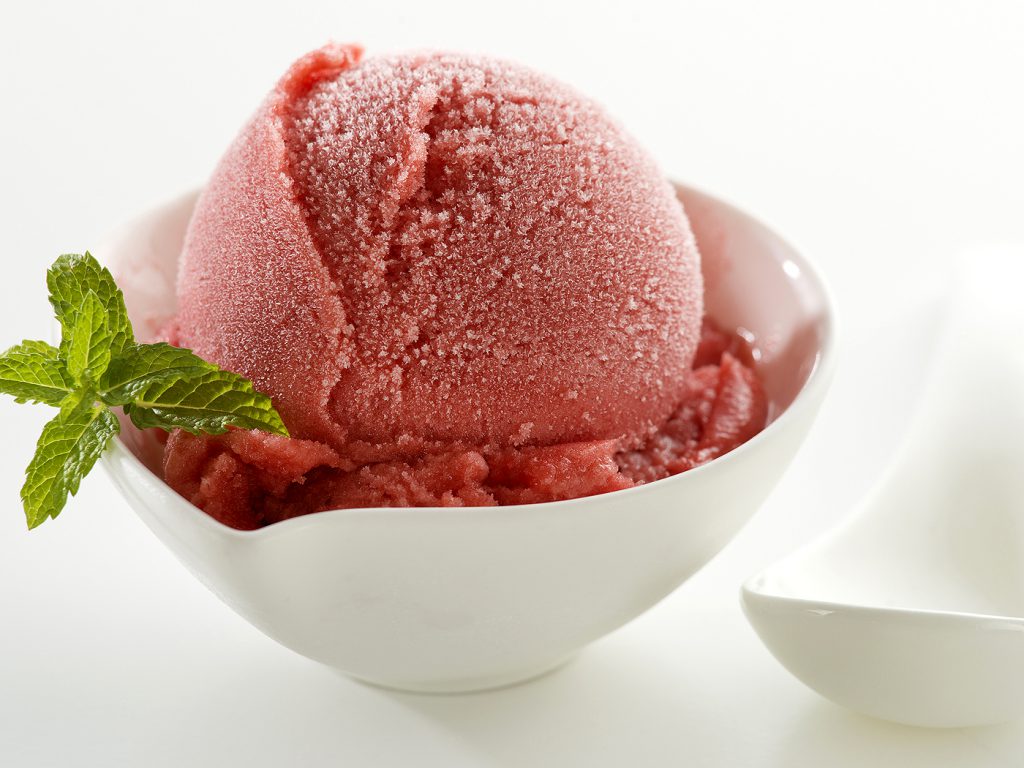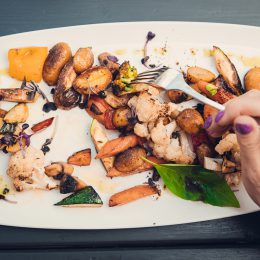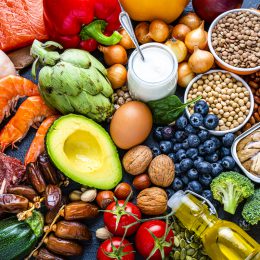6 Incredibly Easy Ways to Cut 100+ Calories a Day
These tiny tweaks can help you reach your weight loss goals without ever feeling hungry—or even skipping dessert.

Ask any nutrition expert how to cut calories, and there’s a good chance you’ll hear some familiar advice: Prepare meals at home, ditch sugary drinks and sodas, practice portion control.
But what if you already do all of those things and the scale still doesn’t budge? It’s not that their advice isn’t good. You just might be asking the wrong question. The right one: “What can I do better?”
That’s exactly what we asked top nutrition experts across the nation. The result: These six small changes anyone can make to cut 100 calories (or more) every day.
1. Walk the Ladder to Leanness
Don’t even try to cut 100 calories at once. Take a smaller step to start. The average meal clocks in around 500 or 600 calories, so cutting 100 will leave you wanting more. “You’re talking about taking 20 percent of the calories away from that meal,” says Dana Ellis Hunnes, Ph.D., R.D., senior dietitian at Ronald Reagan UCLA Medical Center.
A better approach: Cut back throughout the day in smaller amounts, like 30 or 35 calories per meal. It’s not only less overwhelming, but it’s much less noticeable, she says. Some of her favorite swaps:
- Breakfast: If you eat toast with butter or jam, save 30 to 40 calories by switching to a no-sugar-added option. Or substitute one tablespoon of butter (100 calories) for one or two tablespoons of mashed avocado (25 calories per tablespoon).
- Lunch: Swap two large flour tortillas (about 300 calories) for four small corn tortillas (about 209 calories). Corn tortillas also have more belly-filling fiber and less fat than the flour variety.
- Dinner: Roast and mash cauliflower instead of potatoes to save 50 to 100 calories per serving.
2. Always Start with Vegetables
This is a good rule of thumb for two key moments: When putting food on your plate and when you sit down to eat. “You fill up on the least calorie-dense foods first [peas, broccoli, Brussels sprouts], and then work your way forward,” says Alan Aragon, a nutrition researcher and author of The Lean Muscle Diet.
“This will typically cut your desire to load up the plate with the calorie-dense stuff, and it’s also a good way to reduce your cravings for seconds or dessert.”
3. Rethink Your Dressing Ratios
You already know to skip store-bought salad dressings, which are often packed with excess calories, sugar, and fat. But you can cut even more calories from your homemade version by adjusting the ratio of oil to vinegar to favor the latter, says Kristin Kirkpatrick, R.D., wellness manager at the Cleveland Clinic.
Olive oil has about 119 calories per tablespoon, while balsamic vinegar has about 14 calories per tablespoon and red wine vinegar has about 3. “I pair 2 tablespoons of a blueberry balsamic with about 1.2 tablespoons of a lemon-infused olive oil,” Kirkpatrick says.
Another tip: Switch between a variety of vinegar flavors—maple, cherry, or lemon balsamic—so you never get bored with the same old salad.
4. Satisfy Your Sweet Tooth with Sorbet
After eating a healthy meal, it’s tempting to reward yourself with a simple dessert like a bowl of ice cream. But simple doesn’t mean low-calorie. A ½-cup serving of Häagen-Dazs clocks in around 250 to 300 calories, whereas the same amount of the brand’s sorbet falls in the 150-calorie range. “If you’re someone who eats ice cream every day, this one change could help you lose up to 15 pounds in a year,” Hunnes says.
If you’re lactose intolerant, nondairy alternatives such as So Delicious also fall in the 100- to 200-calorie range.
Subscribe to our newsletter
It's quick and easy. You could be one of the 13 million people who are eligible.
Already a member? Click to discover our 15,000+ participating locations.
Follow Us
Whether you choose sorbet or nondairy frozen dessert, check the nutrition label. Calorie counts can vary between brands and flavors. Hint: Simpler offerings (like vanilla and chocolate) generally have fewer calories than options with mix-ins or sauces (like salted caramel cluster or chocolate peanut butter swirl).
5. Pack in Even More Protein
Another familiar tip to lose weight: Include some protein in every meal and snack. The idea is that you’ll eat fewer calories overall since protein keeps you feeling full longer than carbs and fat do. But even if you already follow that rule, there’s a good chance you’re still not getting enough. “Due to decreased muscle mass,” Kirkpatrick says, “your protein needs double after age 65.”
One easy way to pack more in: Swap fruit smoothies, which tend to be high in calories and sugar, for plant protein-based ones, she suggests. “I would add in a plant-based protein powder, hemp seed, or even a plain yogurt, and aim for at least 10 grams.”
Another option: Replace grain pasta with bean pasta. You’ll not only save calories and carbs, but most bean-based pastas—made of lentils, black beans, or chickpeas—pack two to five times more protein per serving than whole grain pasta.
6. Have Another Drink
Unfortunately, we’re not talking about a cocktail. “Drink one to two tall glasses of water before each main meal,” Aragon says. Research repeatedly shows that this one simple guideline works to reduce the total amount of calories someone will eat, he says. Plus, it can help you stay hydrated, which helps your body function properly.
Can’t commit to every meal? Drinking just one more cup of water per day was linked to eating 68 fewer total calories, while drinking three more cups was associated with eating 205 fewer calories per day, according to a study published in the Journal of Human Nutrition and Dietetics.





